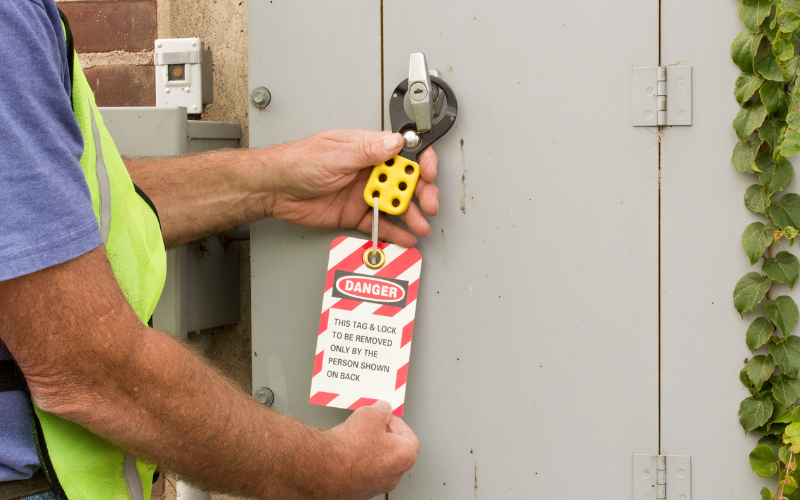You wouldn’t work on the underside of a car without making sure that the engine isn’t going to start or it’s securely on a jack. Why would you trust machinery to be off and safe when working on it?
Lockout tagout procedures (LOTO) are processes that keep employees safe while they’re repairing machines. A lockout tagout procedure is important because it involves preventing machines or equipment from energizing, starting up, or releasing hazardous energy during non-routine work like repairs. These procedures also need to be codified to ensure that the process is safe.
Luckily, LOTO programs don’t have to be complicated as long as all of the relevant information gets across. The best programs are going to be user-focused, detailed, consistent, and taught repeatedly. A proper LOTO program will incorporate these eight points.
Shutdown Preparation
Before the possibility of a shutdown ever comes up, everyone should know how they work. Employees at all levels should be appropriately trained on lockout procedures as well as aware of the hazardous energy sources on the site. Education is the first step to being able to control the equipment and make sure repairs go smoothly.
Notify Employees
Everyone whose jobs will be affected by the lockout needs to be informed. Tell them when the work is happening and how long the equipment is going to be down. If the equipment is necessary for the completion of work, remind them of any alternative processes.
Shut Down the Energy Sources
It’s time to shut down the equipment that’s getting locked out. Make sure that you’re following the procedures specific to that equipment according to the operating manual and that the lockdown is happening in the safest possible conditions.
Isolate the Energy Sources
This means the circuit breakers, valves, or other machinery that supplies energy to the equipment. Again, make this explicitly clear: don’t count on someone, no matter how experienced, knowing the procedure automatically.
Lock the Energy Sources
This requires a padlock-like LOTO device. This will physically prevent the equipment from being reenergized. All authorized employees involved in the lockout will have their own lockout device with a tag displaying who locked it out, when, and why.
Release or Control the Stored Energy
No new energy can enter the system at this point, but you still need to get rid of the energy that’s already there to avoid accidents. Think compressed air, capacitors, and even compressed springs that could release energy or get the machine started while someone’s doing important work on it.
Verify Lockout
There should not be a way to reenergize the equipment until after the service is done. Even if you’ve followed all of the instructions it’s worth it to double-check that your lockout was successful. Make certain that all of the hazardous energy has been isolated and there isn’t a risk of failure.
Maintain Lockout
The equipment needs to remain in lockout until it’s safe to restore service. This includes shift change times. Once again, inform the personnel of what you’re doing, then clear equipment, materials, and workers from the dangerous area as you remove lockout devices and test the equipment. Don’t remove the LOTO device until it’s absolutely safe.
Do you have other safety questions? PK Safety has been your worksite safety partner for over 70 years, and we know what to bring and what to do to stay safe at work. To talk to one of our safety experts, use our online contact form or call 800.829.9580.

